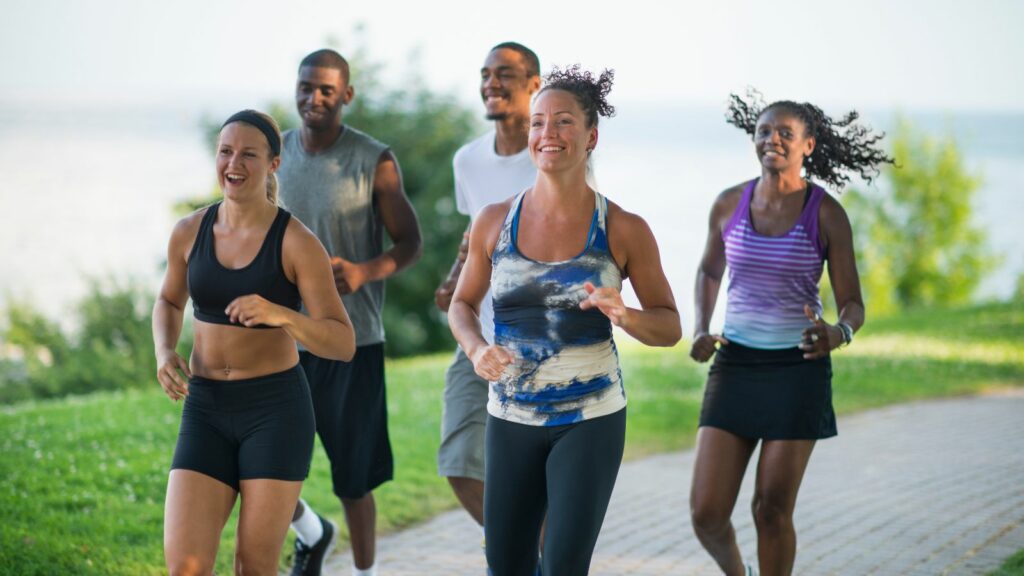Living an Active Lifestyle isn’t just a trend, it’s a key ingredient to long-term health and wellness. It’s about more than just hitting the gym or going for a run. An Active Lifestyle incorporates physical activity into everyday routines, from taking the stairs instead of the elevator to cycling to work.
Active Lifestyle
Engaging in an Active Lifestyle offers a plethora of benefits that extend far beyond the obvious physical health improvements. These advantages span both mental and overall wellbeing and have the power to transform one’s quality of life.
Reduced Risk of Chronic Diseases
An Active Lifestyle is instrumental in fending off the risk of chronic diseases. Regular physical activity strengthens the heart, improves blood circulation, and regulates blood pressure. It’s a cornerstone for preventing heart disease, diabetes, and stroke. The Center for Disease Control and Prevention asserts that adults who engage in physical activity have a 20% reduced risk of developing cardiovascular diseases.
Improved Mental Health
Mental wellness can’t be overemphasised when painting the picture of a healthy lifestyle. Regular physical activity has been linked to reduced feelings of anxiety and depression. It boosts mood, improves self-esteem, and helps in managing stress. Regular exercise also promotes better sleep, which is essential for cognitive functioning and overall mental health.
Enhanced Productivity
An Active Lifestyle isn’t just beneficial to health – it’s also a productivity booster. Regular physical activity enhances cognition and creativity. It bolsters concentration, memory, and learning, making one more productive at work and in daily life.
Active living also encourages social interaction. Being physically active often means being out and about – participating in group classes, joining a sports league or simply walking in the park. This fosters social connections, reducing feelings of loneliness and improving overall life satisfaction.
 Incorporating Physical Activity Into Daily Life
Incorporating Physical Activity Into Daily Life
For an Active Lifestyle to effectively influence health and wellbeing, it’s crucial to weave physical activity seamlessly into daily routine. Yet, the hustle and bustle of modern life can make finding time for exercise seem like a daunting task. But the truth is there’s always an opportunity to be active, one just needs to know where to look.
There are a variety of ways to incorporate physical activity into daily life, and it’s not as difficult as it might seem. Many activities that contribute to physical wellness don’t require a gym membership or any special equipment; they simply involve making small changes to daily routines.
Walking or biking instead of driving for short distances is an excellent way to incorporate exercise into daily activities. Not only does it promote cardiovascular health, it’s also eco-friendly. Additionally, using the stairs instead of an elevator can significantly increase daily physical activity levels.
During work breaks, instead of sitting and browsing through social media, people could take a quick walk around the block or even do some light stretching. A brief break from the screen can also ease digital eye strain and boost productivity.
Even chores around the house such as cleaning, tidying, or gardening can count as physical activity. Turning on some music and adding energy to these tasks can transform them into an enjoyable workout.
 The Role of Nutrition in an Active Lifestyle
The Role of Nutrition in an Active Lifestyle
Good nutrition and regular exercise are two key components of an Active Lifestyle. One can’t overlook the importance of a well-balanced diet that complements the physical activities. Nutrition doesn’t just fuel the workouts, it also sustains health and impacts energy levels and mood.
An often overlooked aspect of nutrition is hydration. Hydration affects every bodily process, including metabolism and cellular functions. When an individual is dehydrated, it can significantly affect physical performance and brain functioning.
Another integral facet of nutrition for an Active Lifestyle is timing. Nutrition experts often suggest consuming meals and snacks around workouts to maximise energy levels and aid in recovery. For instance, it’s a good idea to have carbohydrates before workouts for energy and protein after workouts to aid in muscle recovery.
Portion control is just as important, as it is essential in maintaining a healthy weight. Eating the right quantity of the foods is just as critical as eating the right kind of foods.
